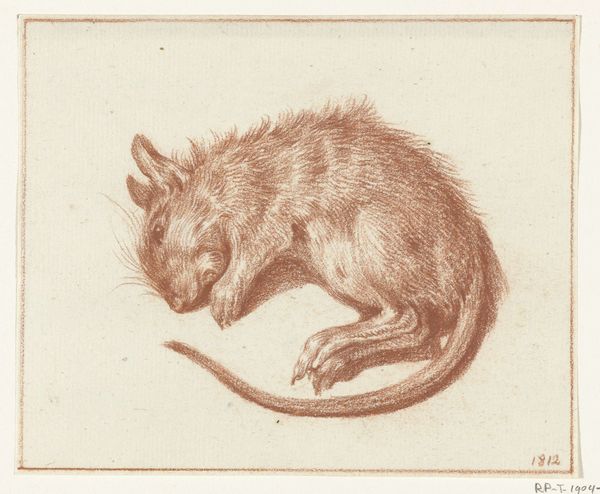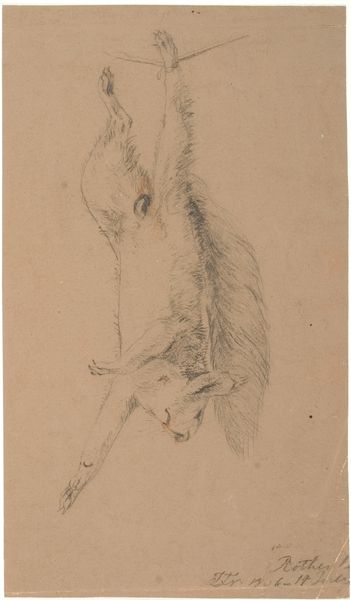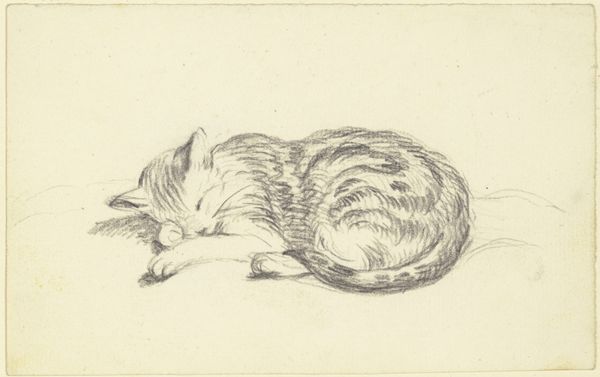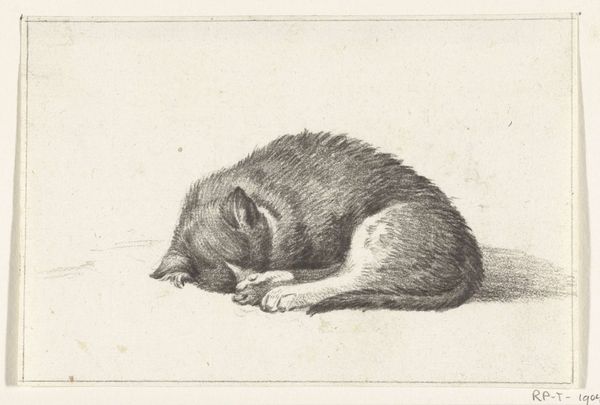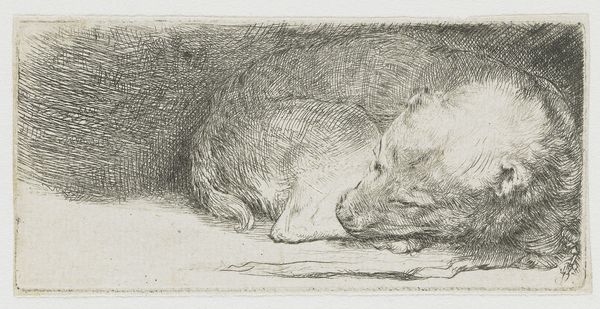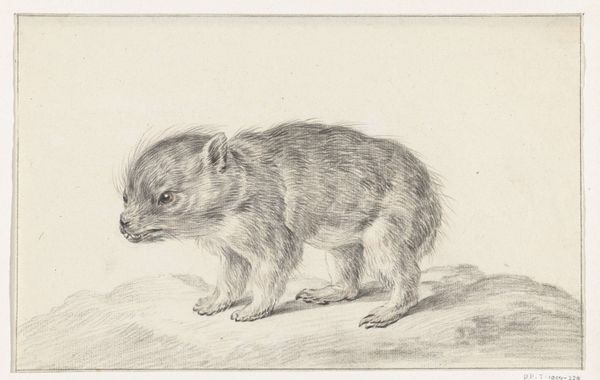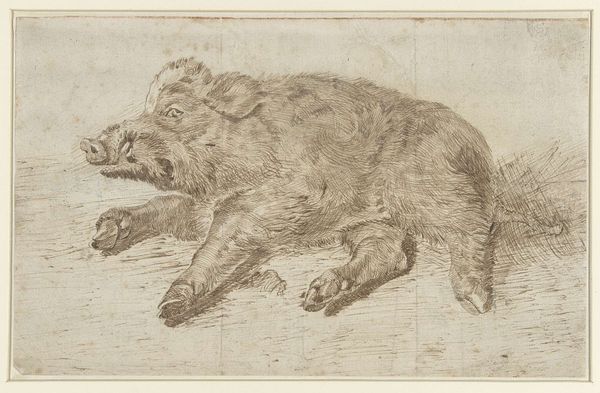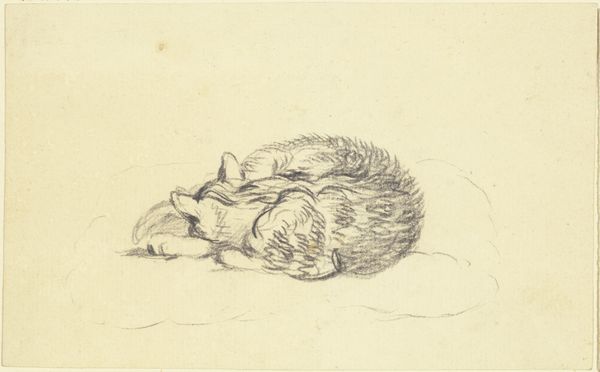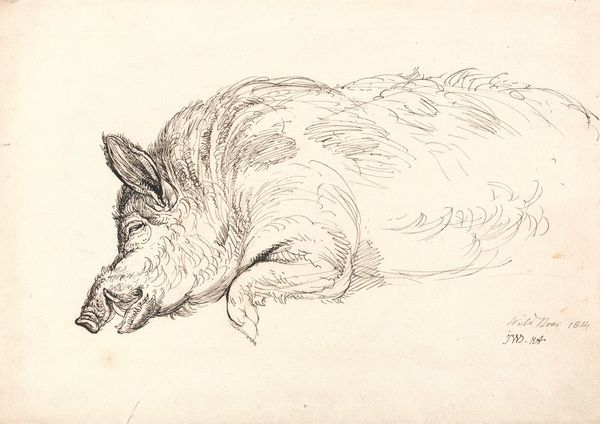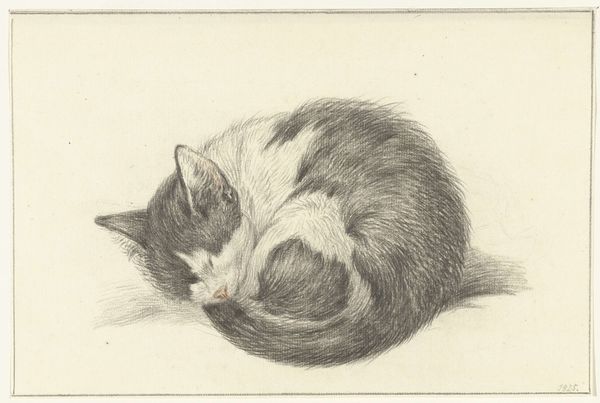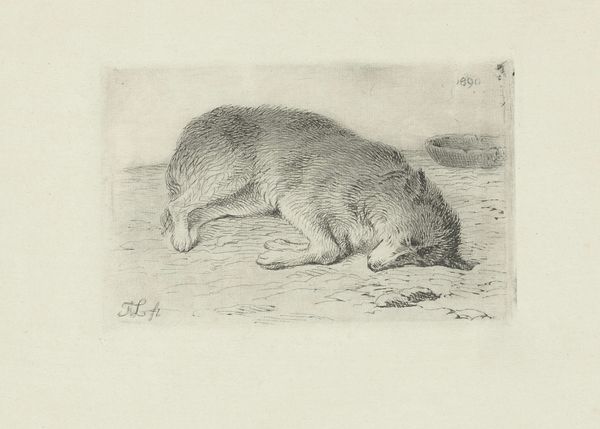
drawing, pencil, charcoal
#
drawing
#
dutch-golden-age
#
oil painting
#
coloured pencil
#
pencil
#
charcoal
#
watercolor
#
realism
Dimensions: height 69 mm, width 123 mm
Copyright: Rijks Museum: Open Domain
Editor: So, this drawing is called "Sleeping Fox" by Gerard ter Borch, made before 1662. It’s currently at the Rijksmuseum. It’s done with pencil and charcoal… it has a very quiet, peaceful mood. What do you see in this piece? Curator: This fox, curled in slumber, speaks volumes. In the Dutch Golden Age, animals often transcended simple representation, becoming potent symbols. Tell me, what qualities do you associate with a fox? Editor: Cunning, maybe? A bit mischievous? Curator: Precisely! The fox, in folklore, often embodies intelligence, resourcefulness, but also deception. Now, consider a sleeping fox. Is it still cunning? Or is there vulnerability exposed? Editor: Hmm, I see what you mean. Sleeping, it's disarmed, right? So is Ter Borch perhaps suggesting even tricksters have moments of vulnerability, or rest? Curator: It is an interesting reading. Furthermore, Ter Borch has captured a familiar posture and pose in his rendering of the animal’s sleep. Note the shadows rendered beside the fox to add weight. The fox may signify societal shrewdness in repose. What else do you notice? Editor: It is in coloured pencil but subdued – a natural, realistic, informal depiction. What else could "Sleeping Fox" be symbolizing? Curator: Perhaps the illusion of control. A sleeping fox, though seemingly powerless, could be gathering its strength for the next venture, embodying the deceptive appearance versus potent reality. The image might encourage people to ponder the dual nature of rest. It's food for thought. What are your impressions now? Editor: I guess it's about pausing and considering the many hidden angles that lie within simple imagery. Thanks! Curator: Exactly! Symbolism enriches art, inviting deeper engagement. Glad to share this perspective!
Comments
No comments
Be the first to comment and join the conversation on the ultimate creative platform.
